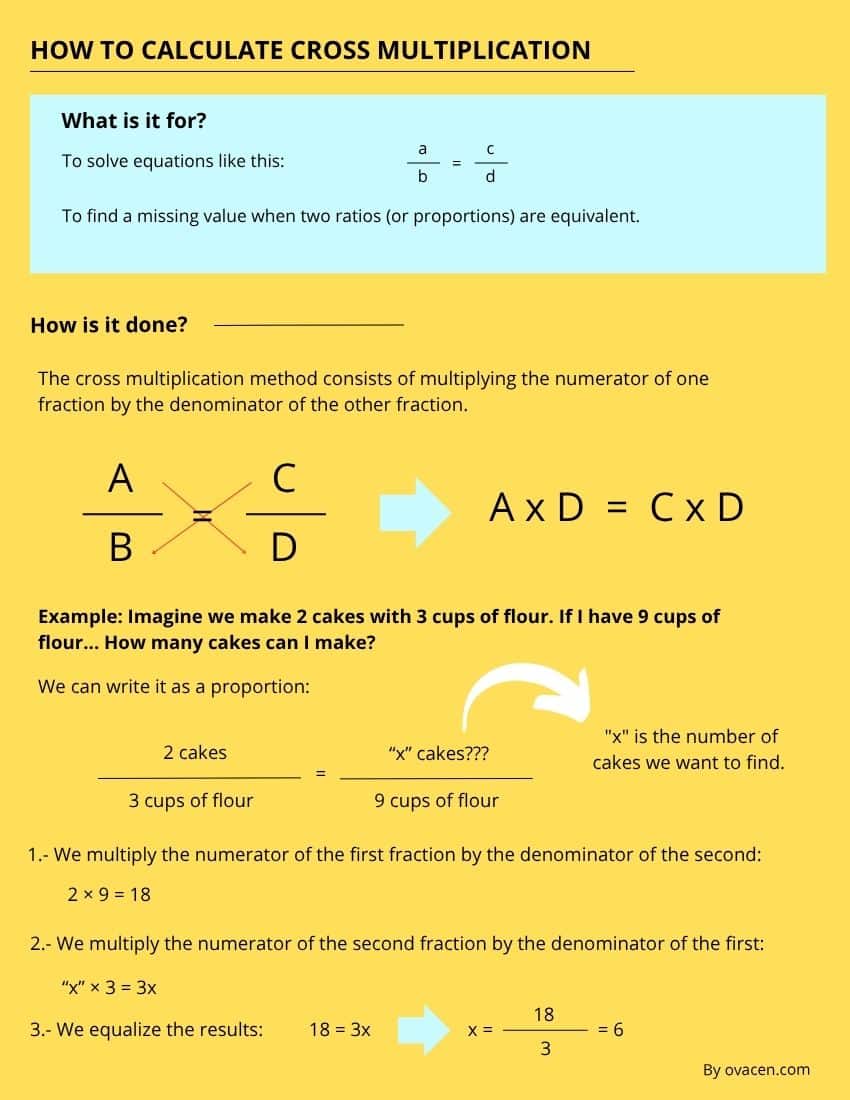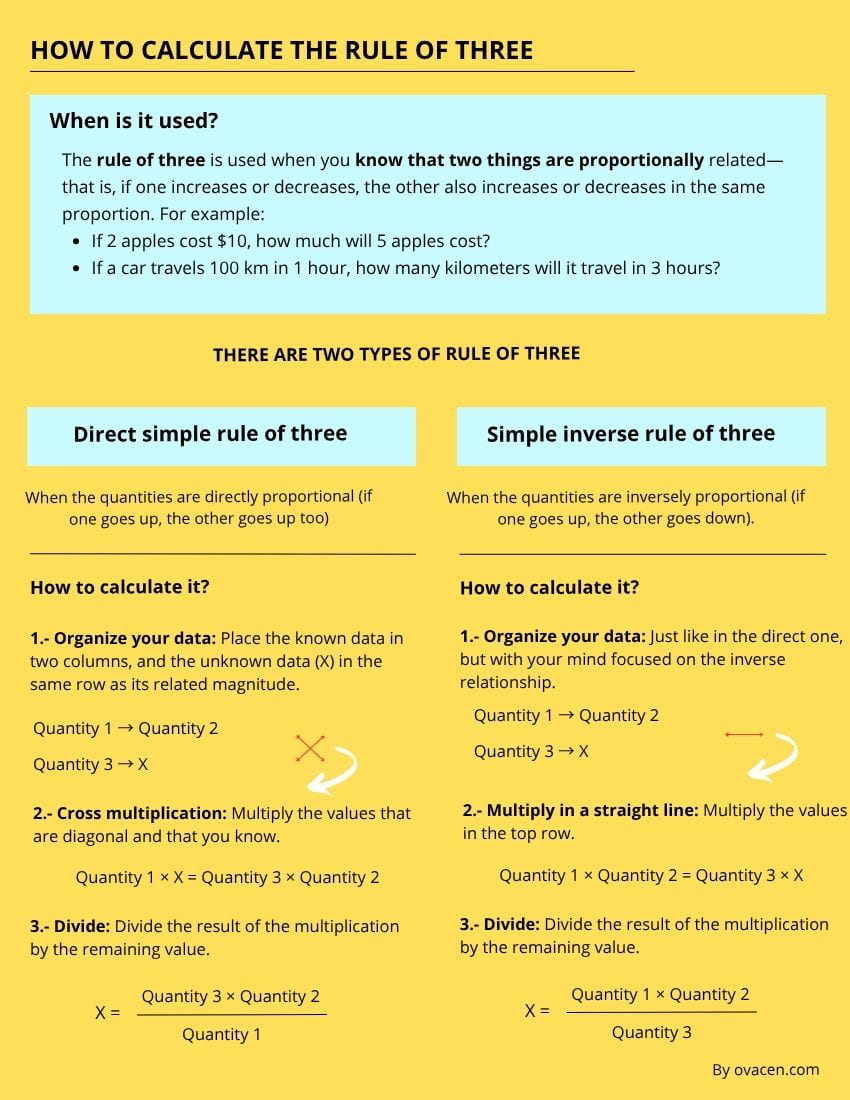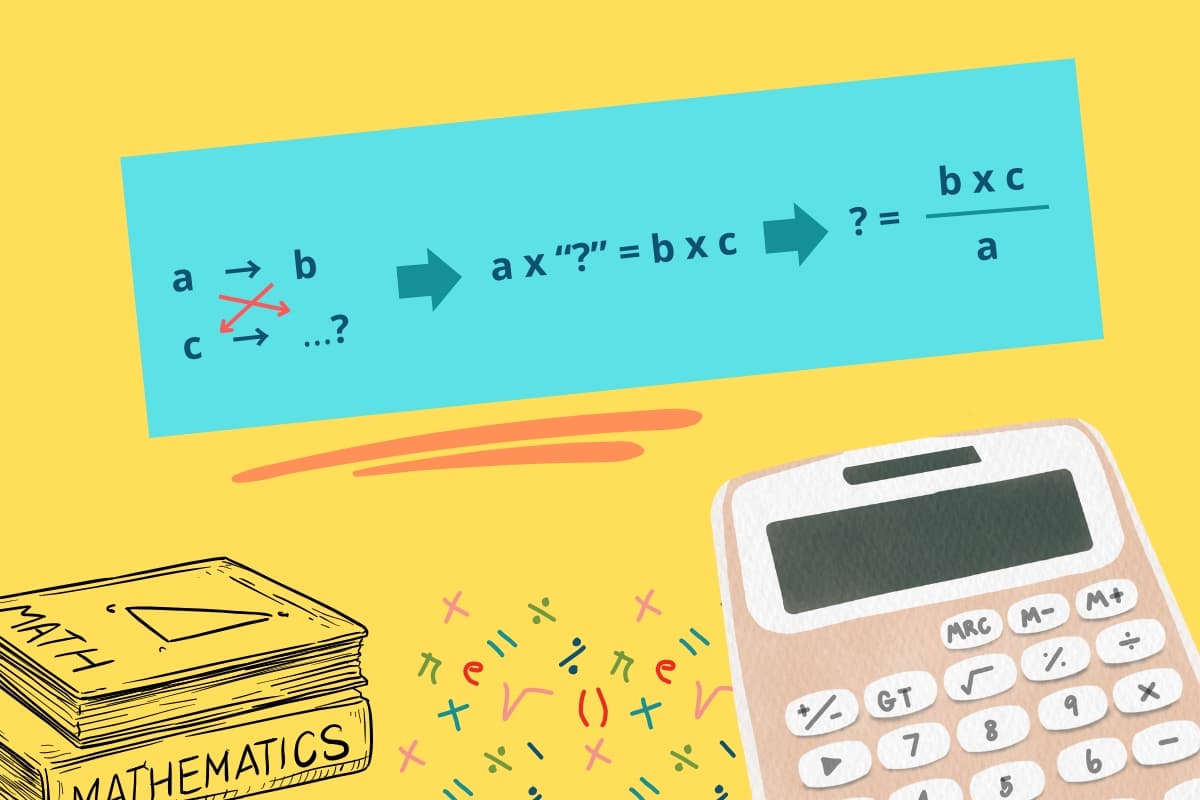Calculate instantly and quickly! Your math assistant always at hand to calculate the cross multiplication online (cross-multiply) easily.
Cross Multiplication
=
Do you want to see other calculation tools?
The previous online application is a cross multiplication calculator where you can solve proportionality problems. You just have to enter the corresponding data in the blank boxes and the unknown value will be automatically calculated.
The cross multiplication is a mathematical technique used to find an unknown value in a proportional relationship between two magnitudes. It is very useful in everyday situations such as distributions, conversions, recipe adjustments, financial calculations, etc.
How to use the cross multiplication calculator?
The operation of our calculator for the online cross multiplication is easy and optimized so you can get the information you need without complications. The steps to follow:
- Enter the known values: Enter the corresponding figures of the known magnitudes in the blank boxes.
- Immediate results: The result will appear automatically, showing the unknown value and the complete proportional relationship.
- At the bottom of the calculator, the mathematical calculations performed step by step will automatically appear.
How is the cross multiplication calculated?
The cross multiplication is used to solve proportionality problems. First, in the following image we explain how to calculate the cross multiplication:

🟧 Example of cross multiplication calculation:
Imagine you’re driving a car. You know you traveled 120 kilometers in 2 hours, and you want to know how long it will take to travel 300 kilometers if you maintain the same speed. We can set this up as a proportion (two equal ratios):
“x” is the unknown time we want to find. Now, we apply cross multiplication:
- 1. Multiply diagonally down and to the right: Multiply the numerator of the first fraction (120 km) by the denominator of the second fraction (x hours).
-
- 120 × x = 120x
-
- 2. Multiply diagonally up and to the left: Multiply the numerator of the second fraction (300 km) by the denominator of the first fraction (2 hours).
-
- 300 × 2 = 600
-
- 3. Set the results equal:
-
- 120x = 600
-
- Now, we have a simple equation we can solve for “x”. To isolate “x”, divide both sides of the equation by 120:
-
- x = (600 / 120) = 5 hours (time it will take to travel 300 kilometers at the same speed)
-
Why is it sometimes called Cross-Multiplication and other times Rule of Three?
“Cross-multiplication” and “rule of three” essentially refer to the same process, but with a slight difference in context and historical background:
- Rule of Three: This is a more traditional term, commonly used in Spanish-speaking countries and classical math education. It refers to solving proportions using a standardized method involving three known values to find a fourth.
- Cross-Multiplication (cross multiply): This is a more modern term that describes the actual algebraic technique of multiplying across the equals sign in a proportion to solve for an unknown.
Cross-multiplication is the mathematical method or technique used to solve the “rule of three.”
If you want to learn more, I advise you to look at the following PDF that explains its variants very well and with examples of the Cross-multiplication.
🟧 Note: To understand how the direct and indirect rule of three method is performed, we provide the following schematic image:

Frequently asked questions about Cross Multiplication – FAQ
What is cross multiplication?
Cross multiplication is a method used to solve proportions by multiplying the numerator of one fraction by the denominator of the other and setting the products equal.
When should I use cross multiplication?
Use it when you have two equal fractions or ratios, especially when solving for an unknown value in a proportion.
How does cross multiplication work step by step?
Multiply the top of one fraction by the bottom of the other, then set those two results equal and solve the equation.
Is cross multiplication only for algebra?
No, it’s also useful in real-life situations like unit conversion, scaling, and comparing quantities.
Can I use cross multiplication if there are variables on both sides?
Yes, as long as the equation is a proportion, you can cross multiply and then solve the resulting equation.
Why do we use cross multiplication instead of common denominators?
It’s faster and more direct than finding common denominators when working with proportions.
What are some common mistakes in cross multiplication?
Common mistakes include multiplying numerators together or denominators together, instead of cross multiplying, and making errors with signs or variables.
How do I check my answer after cross multiplying?
Plug your solution back into the original proportion and verify that both sides are equal when cross multiplied.
Does cross multiplication work with decimals or mixed numbers?
Yes, but it’s often easier to convert them to improper fractions or simple decimals first.
Can cross multiplication help solve percentage problems?
Yes, since percentages can be written as fractions, they fit well into proportions solved by cross multiplication.
When is the direct rule of three used?
The direct rule of three is used when two magnitudes are directly proportional, which means that when one increases, the other also increases in the same proportion. For example, more hours worked, more money earned.
When is the inverse rule of three used?
The inverse rule of three is applied when the magnitudes are inversely proportional, that is, when one increases, the other decreases. For example, if there are more workers on a construction site, less time is needed to finish it.
How to know if it is a direct or inverse rule of three?
To know if it is direct or inverse, you must analyze how the magnitudes interact. If when one quantity increases the other also increases, it is direct. If when one quantity increases the other decreases, it is inverse.
What is the formula for the rule of three?
In the direct rule of three, the formula is: a / b = c / x or also a × x = b × c. In the inverse rule of three, the formula is written as a × b = c × x, since being inverse magnitudes, the values corresponding to each situation are multiplied.
Does the rule of three only work with whole numbers?
No, the rule of 3 works with any type of number, including decimals, fractions, and percentages. The important thing is to maintain the proportion between the magnitudes and perform the mathematical operations correctly.
